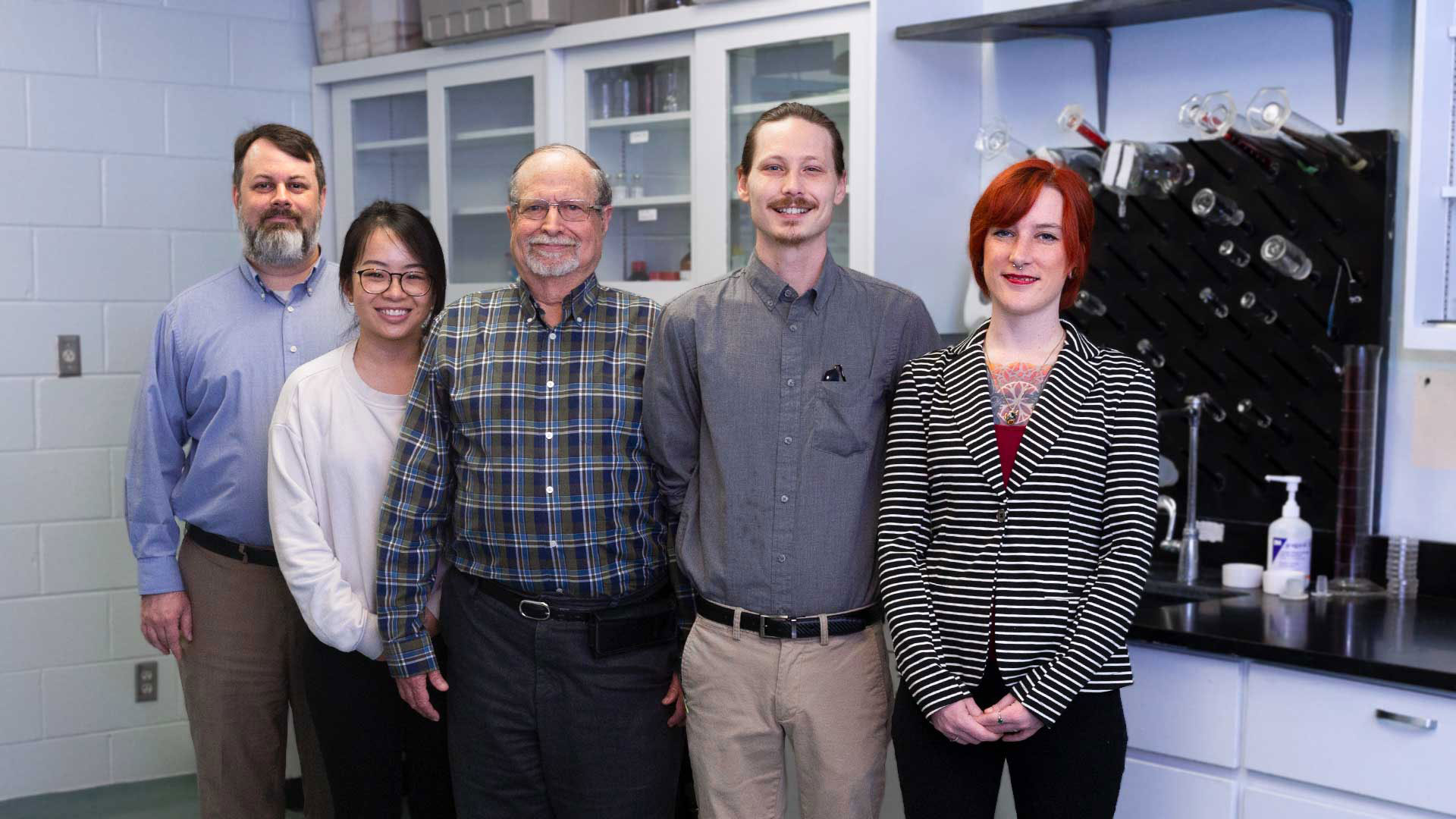UHCL researching novel approach to tackling opioid addiction
March 1, 2019 | UHCL Staff

Two University of Houston-Clear Lake psychology professors and their student team have been conducting novel research into treating
opioid addiction – not by manipulating or substituting the drug, but rather by manipulating
the body's biochemical reactions that cause dependence and tolerance to the drug.
As drug overdose deaths in the United States continue to increase, the Centers for
Disease Control is reporting alarming statistics: Between 1999 and 2017, more than
700,000 people have died from a drug overdose, and 68 percent of the 70,200 drug overdose
deaths in 2017 involved an opioid. This class of drugs is extremely efficient at relieving
pain, but their use is shadowed by risk of addiction, tolerance and other negative
side effects. UH-Clear Lake professors of Psychology and Neuroscience David Malin and Chris Ward, along with a team student researchers, have been working to demonstrate a potential
therapeutic approach to treating dependence on narcotics.
Malin said their research explored two of the most serious problems facing drug users:
narcotic tolerance and physical dependence. “Our student-faculty research group concerned
itself with these issues, and the protagonist of the story is neuropeptide FF, or
NPFF,” he said.
Malin explained that a peptide is a chain of amino acids somewhat similar to a small
protein. Many peptides are involved in communication among cells. They alter various
physiological functions, behavioral tendencies and pain sensitivity.
A former collaborator of the UHCL research team, Dr. H-Y. T. Yang of the National
Institutes of Health, noticed that NPFF interfered with some actions of the opiate
drug, morphine. The UHCL and NIH teams found that chronic morphine exposure dramatically
increased the release of NPFF.
“We then hypothesized that by fighting back against the morphine, it might contribute
to narcotic tolerance, or a progressive loss of potency, which then leads to increasing
the dosage. Also, by fighting back in the opposite direction to opiates, the increased
NPFF levels might contribute to physical dependence and the withdrawal syndrome,”
Malin said. “The opiates are very effective painkillers. But when substances such
as NPFF are fighting back in the opposite direction and then the pain-killing opiate
is removed, you become agonizingly more sensitive to pain.”
Ward added, “With opiates, the desire to avoid withdrawal by taking more drug becomes
overwhelming. This helps sustain the drug habit.”
In earlier laboratory research with UHCL students and outside collaborators, Malin
was able to reduce morphine tolerance and physical dependence with antibodies to NPFF
and drugs that interfered with receptors for NPFF. However, things later became more
complicated with the discovery of two types of NPFF receptors. These two often seem
to have opposite effects when stimulated.
In a recent journal article, the UHCL group found that a drug that stimulated one
type while inhibiting the other, reversed tolerance to a substantial dose of morphine.
In another journal article, the group reported that a drug that interfered with one
of the two receptor subtypes reversed physical dependence as indicated by prevention
of withdrawal syndrome.
It is important to note that these experimental drugs are probably not suitable for
clinical medical use. Rather, they show they demonstrate a potential strategy for
combating the habit-forming effects of opiate narcotics.
Usual approaches to treating these problems focus on the opiate drug itself or its
receptors. Instead, the UHCL research focus on interfering with one of the body’s
multiple responses to chronic narcotic exposure, responses that lead more directly
to tolerance and physical dependence. The ultimate goals of this entire research area
include interventions that allow pain patients to continue to find relief from modest
doses of opiate pain-killers without having to keep raising the dose. Another goal
is to reduce physical dependence so that users can better be eased off narcotic drugs
with much less of a withdrawal syndrome.
Currently, a number of approaches toward these goals are undergoing preliminary testing
in a number of laboratories. “The more hypothetical approaches under consideration,
the greater our chance of eventually finding new powerful tools to combat this overwhelming
human problem,” Malin noted.
For more information about UHCL’s Psychology M.S. with Behavioral Neuroscience Concentration,
visit www.uhcl.edu/academics/degrees/psychology-ms-behavioral-neuroscience-concentration.
About the Author:
Recent entries by
October 18 2022
Better technology transforms campus safety: Police Chief demonstrates SafeZone to students
October 14 2022
Student's skill with drones takes chicken turtle research to new heights
October 11 2022
Planting event to help UHCL restore native plants to campus, support environmental sustainability







